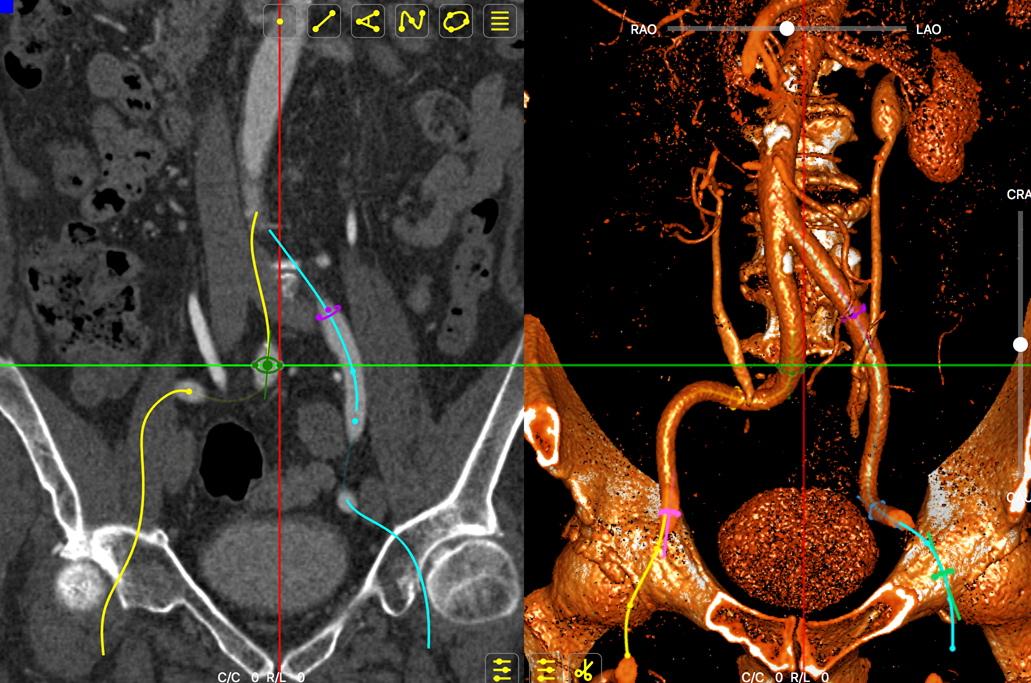For 5 million lives, I hope you know about this new therapy.
In recent years, with the aging population, the incidence of aortic stenosis (AS) in the elderly has been steadily increasing. According to statistics from the Fuwai Hospital of the Chinese Academy of Medical Sciences, there are about 5 million AS patients in China.
Since aortic stenosis is mostly an age-related condition that is asymptomatic in youth, once symptoms appear, the condition becomes extremely dangerous and can lead to sudden death at any time. However, the standard treatment for AS patients in the past, when replacing artificial valves, was open-chest surgery, which carries a high risk, especially for older patients with poor surgical tolerance.
This once put aortic patients in a difficult choice between surgical risks and high risk of death.
New Choice for AS Patients - Transcatheter Aortic Valve Implantation(TAVI)
With the innovative development of medical technology and the development of new medical devices, a minimally invasive heart surgery, Transcatheter Aortic Valve Implantation(TAVI), has become a new choice for treating this disease.
Compared to traditional surgery, TAVI has advantages such as no need for open chest, small trauma, fast postoperative recovery, and significant efficacy, making it widely favored by patients and physicians.
Although this technology has been around for 18 years, many people still do not understand this treatment. This article will introduce the beginning of this surgery - the surgical approach.
The surgical approach, in simple terms, refers to the entry point of the instrument into the body. Before AS patients undergo TAVI, physicians need to choose the surgical approach for the patient. The most commonly used approach is through the femoral artery, which involves making a small incision in the thigh, and the instrument is passed through this incision into the artery to reach the aortic valve. Currently, approximately 95% of patients worldwide choose the femoral artery approach. In addition, there are other approaches such as the transapical, transaortic, transsubclavian, transcarotid, and transaxillary.
You may wonder, with so many approaches to choose from, why is the femoral artery approach the most popular?
Firstly, the femoral artery approach has accumulated a wealth of successful experience in the clinical field and is the safest and most effective of all approaches.
Large studies have shown that the 30-day and one-year mortality rates after TAVI via the femoral artery approach are lower than those for TAVI treated by non-femoral artery approaches. In addition, compared with other approaches, the femoral artery approach can match local anesthesia, and the best anesthesia procedure can be selected as moderate consciousness, which improves patient tolerance, reduces the incidence of complications, shortens surgical preparation time, and allows patients to be discharged early after surgery.
In China, domestic experts have reached a consensus: based on our country's experience, more than 80% of patients can choose the femoral artery approach. If there are difficulties such as a femoral artery diameter less than 6 mm, severe tortuosity of the vessel, and severe calcification, other approaches may be considered. At the same time, experts also suggest that if other approaches are chosen, it is recommended to complete the surgery in a center with experienced cardiac surgery support.
Furthermore, compared to making a small incision in the neck, collarbone,or other areas, making an incision in the thigh seems safer and more reassuring.
At this point, you may be wondering, if only 80% of patients can choose the femoral artery approach, am I part of the unsuitable 20%? Are there other approaches that are more suitable for me?

Regarding this issue, you can rest assured. Before performing TAVI surgery, the hospital will conduct a comprehensive examination and assessment of the patient. Among them, multidetector computed tomography (MDCT) plays an important role in planning the surgical approach for patients. MDCT can accurately measure the open lumen diameter of the access vessel after three-dimensional reconstruction, evaluate the morphology and load of vessel wall calcification, the degree of atherosclerosis, vessel tortuosity, etc., to confirm the feasibility of the femoral artery approach for patients. Based on these evaluations, it can also help the operator to the greatest extent possible, thereby reducing the incidence of complications such as access vessel during surgery. The occurrence rate. Doctors will decide on the appropriate surgical approach based on the preoperative assessment results, and all you have to do is trust the physician.
Through the above introduction, We hope that everyone has a new understanding of TAVI, a new treatment for aortic valve stenosis.
References:
[1] Sina News "Aging pushes up the incidence of difficult heart disease Specialized medical association accelerates the application of new technology sinking".
[2] Expert consensus on the clinical path of transcatheter aortic valve replacement in China[J]. Chinese Journal of Interventional Cardiology,2018,26(12):661-668.
[3] Jaya Chandrasekhar,Benjamin Hibbert,Marc Ruel,Buu-Khanh Lam,Marino Labinaz,Christopher Glover. Transfemoral vs Non-transfemoral Access for Transcatheter Aortic Valve Implantation: A Systematic Review and Meta-analysis[J]. Canadian Journal of Cardiology,2015,31(12).
[4] Mohamed Abdel-Wahab,Ahmad E. Mostafa,Volker Geist,Björn Stöcker,Ken Gordian,Constanze Merten,Doreen Richardt,Ralph Toelg,Gert Richardt. Comparison of Outcomes in Patients Having Isolated Transcatheter Aortic Valve Implantation Versus Combined With Preprocedural Percutaneous Coronary Intervention[J]. The American Journal of Cardiology,2012,109(4).
[5] Pu Huaxia, Peng Liqing. Research Progress of Multidetector Computed Tomography in Preoperative Evaluation of Transcatheter Aortic Valve Implantation. Advances in Cardiovascular Diseases, 2019, 40(09): 1278-1281.
©Copyright 1998-2023, MicroPort CardioFlow Medtech Corporation. All rights reserved. | 网站备案/许可证号:沪ICP备2023023560号  沪公网安备 31011502014876号
沪公网安备 31011502014876号
互联网药品信息服务资格证书编号:(沪)-非经营性 - 2024 - 0135
“MicroPort CardioFlow”及“  are registered trademarks of MicroPort CardioFlow Medtech Corporation.
are registered trademarks of MicroPort CardioFlow Medtech Corporation.